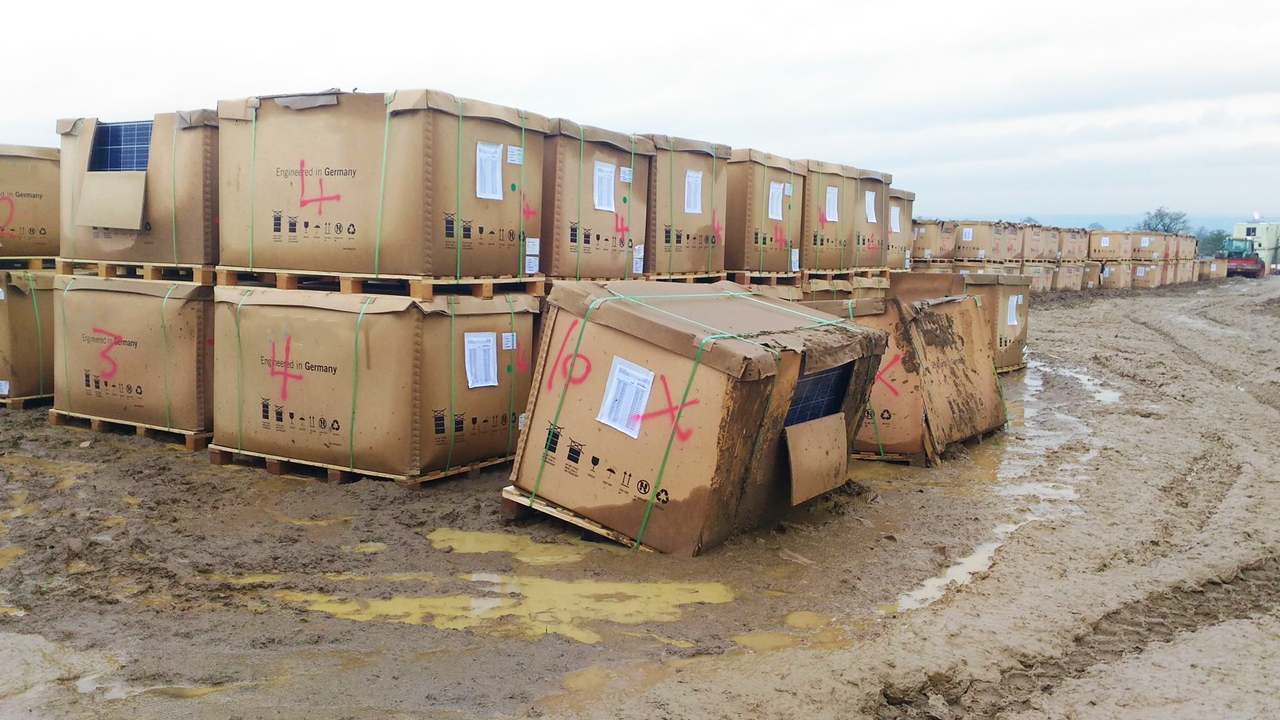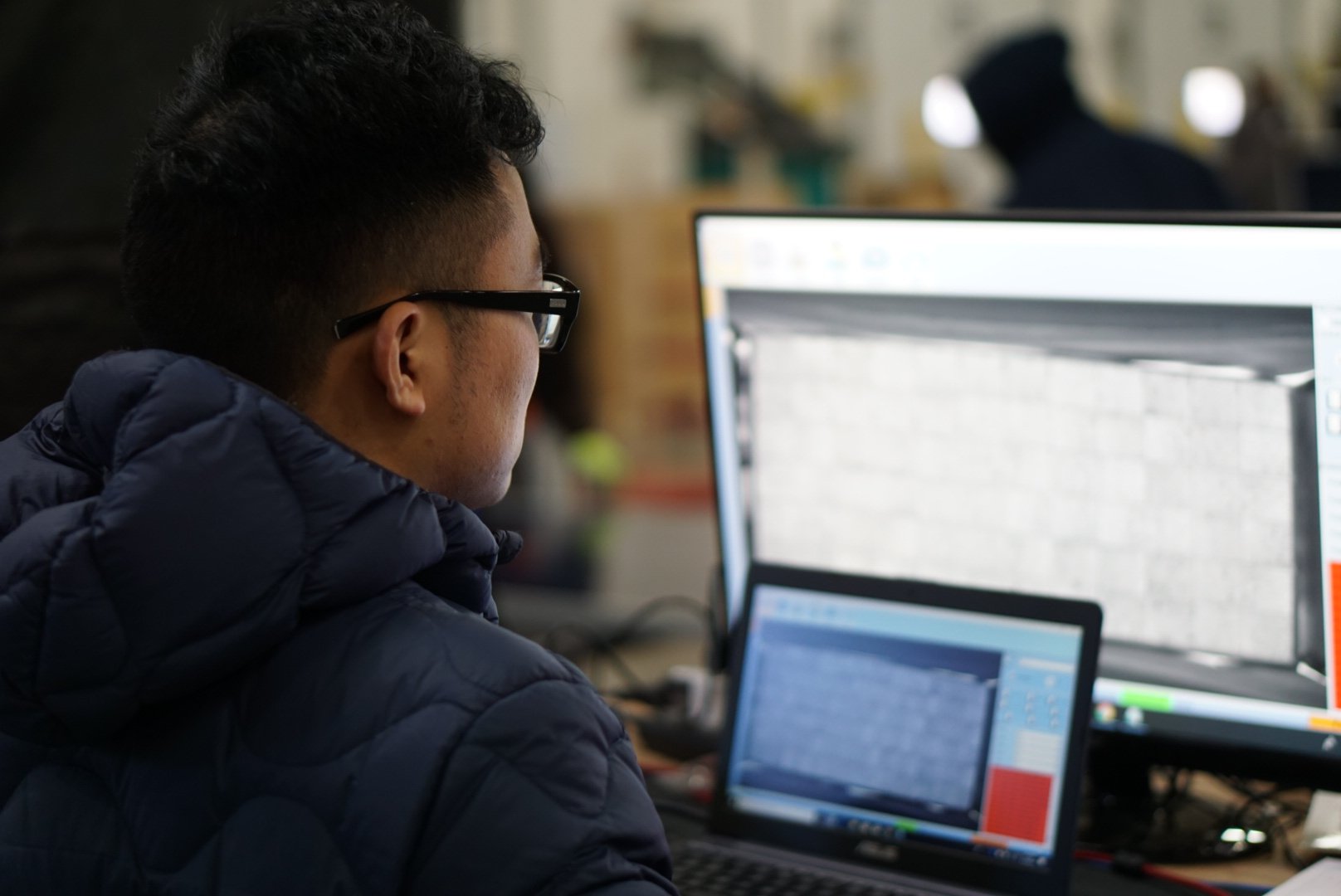/ SERVICES / ENGINEERING
Electroluminescence (EL) Testing for PV Modules
Identify and Eliminate PV Microcracks – The Invisible Performance Thief
The long-term performance of your solar panels depends on many factors. One of the most devastating causes of PV underperformance is also invisible to the naked eye: microcracks within the silicon cells that make up your solar modules.
Microcracks are a type of defect that cannot be detected with visual inspection alone. Microcracks are cracks in the silicon wafers formed due to damage at any stage. In many cases these cracks are not immediately apparent through common testing methods like I-V curve tracing and Infrared (IR) scanning but have the potential to develop into a loss of active cell area and reduce the output of the entire string containing a defective module. Over time microcracks can lead to diode activation or hot spots that represent a safety risk.
Quality control during solar panel manufacturing can identify and resolve micro-cracks before they are shipped, but after the modules leave the production line. Identifying the cause of new damage – either during shipping or from poor installation practices – can be the difference between a successful manufacturer warranty claim, workmanship claim, or absorbing the costs yourself.
Electroluminescence (EL) Testing identifies microcracks in your modules and can help in identifying the root cause.
Ready to Discuss Your Project?
Ensure Solar Project Performance and Avoid Investment Losses with EL Testing
Microcracks are present in most solar installations, but catching severe microcracks and removing them early can prevent considerable performance issues and investment losses.
Electroluminescence testing is a non-invasive method used to identify microcracks on site and help in proving the root cause – necessary for warranty disputes. EL testing is performed onsite, and modules do not need to be uninstalled in order for testing to take place. Testing takes place at night so production is not disrupted. CEA takes investor and insurance grade high-resolution images of either a sample of the panels or the entire site to identify damaged, underperforming modules, and the impact points.
CEA has inspected hundreds of thousands of modules through our comprehensive, independent EL inspections, helping clients identify and eliminate underperforming modules, and backing up their warranty claim disputes.
We leverage the EL images we assess during QA work in PV module factories around the globe to quickly and efficiently identify microcracks and other EL anomalies impacting your site performance.
Comprehensive Third-Party EL Testing of PV Solar Modules
CEA’s comprehensive, independent EL testing of solar sites provides clients with critical need-to-know information on quality risks in the most efficient and cost-effective manner.
Our extensive third-party EL testing experience, including the world’s largest nighttime EL test, has saved clients hundreds of thousands of dollars through successful warranty and workmanship claims, and in early avoidance of severe underperformance.
CEA’s EL Testing provides:
Comprehensive inspection report detailing modules tested and findings for each module
Explanation of most risk associated with the most common EL anomalies observed
Access to independent PV experts with extensive background in EL testing, quality control, and PV performance
Third-Party Quality Assurance and EL Testing for Every Stage of Your Project Lifecycle
Module Production
A good manufacturing QA program ensures that modules are in good condition when they leave the factory. During production, modules undergo EL testing to identify and eliminate microcracks and other defects before they are packed.
Post-Shipment
Post-shipping inspections can identify poor shipping and handling, can identify damaged modules before they are installed, and can be used as a baseline of incoming quality from the manufacturer.
Post-Installation
Post-installation inspections can help identify poor installation practices. Improper installation is one of the leading causes of module damage. A post-installation inspection can also provide a baseline in the event of a severe weather event.
Post-Storm
After a storm, module damage is not always visible to the naked eye. Some modules may even continue to produce power. A post-storm EL inspection can reveal the hidden damages from severe weather events like wind and hail.
DOWNLOAD RESOURCES


























